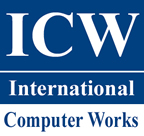 "It all begins with the Map!"
"It all begins with the Map!"GeoElections News
 Temple Terrace, FL
Temple Terrace, FL  www.icwmaps.com VOL. 15 NO.1 -
www.icwmaps.com VOL. 15 NO.1 -  $.50
$.50 
|
The 16th Annual GeoElections User’s Conference – December 2017 Another outstanding GeoElections Conference was conducted for veterans and new users alike. With a guest speaker from the US Census Bureau, Colleen Joyce (listed below) and presentations by the people at ICW, the Conference was a great opportunity for both professional networking and information rich content. The conference this year was dominated with a workshop based upon the US Census Phase II Data Redistricting (VTD) Program and the release of GeoAuthorVTD Edition. The people at ICW developed GeoAuthorVTD Edition to work with the VTD Partnership files. This is the 3rd decade ICW has offered software for this purpose. We conducted a one and a half day workshop learning how to edit the VTD Partnerships Shapefiles for return to the US Census Bureau. These edits included adding new features, updating municipal boundaries, adding hydrography, landmark areas and defining VTDs to define the boundaries of Census Blocks in the 2021 P.L. 94-171 version of the TIGER/Line Shapefiles. GeoElections Colleen D. Joyce, Assistant Chief, Census Redistricting & Voting Rights Data Office described numerous entities eligible to update within the Phase 2 – Voting District Project. Colleen is describing how to update a Census Place boundary in this photo.
|
What Is New With The GeoElections Suite of Applications In the State of Florida we are seeing a trend to move from the traditional ranged addressing to discrete points to identify different households for voter registration. |